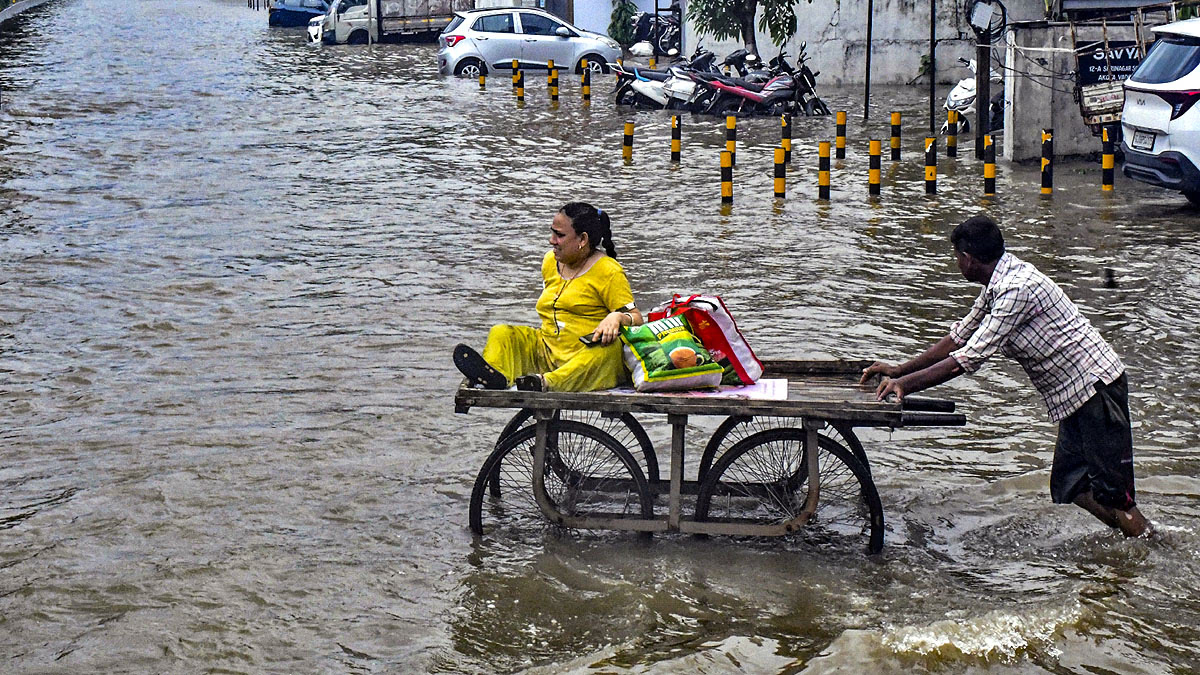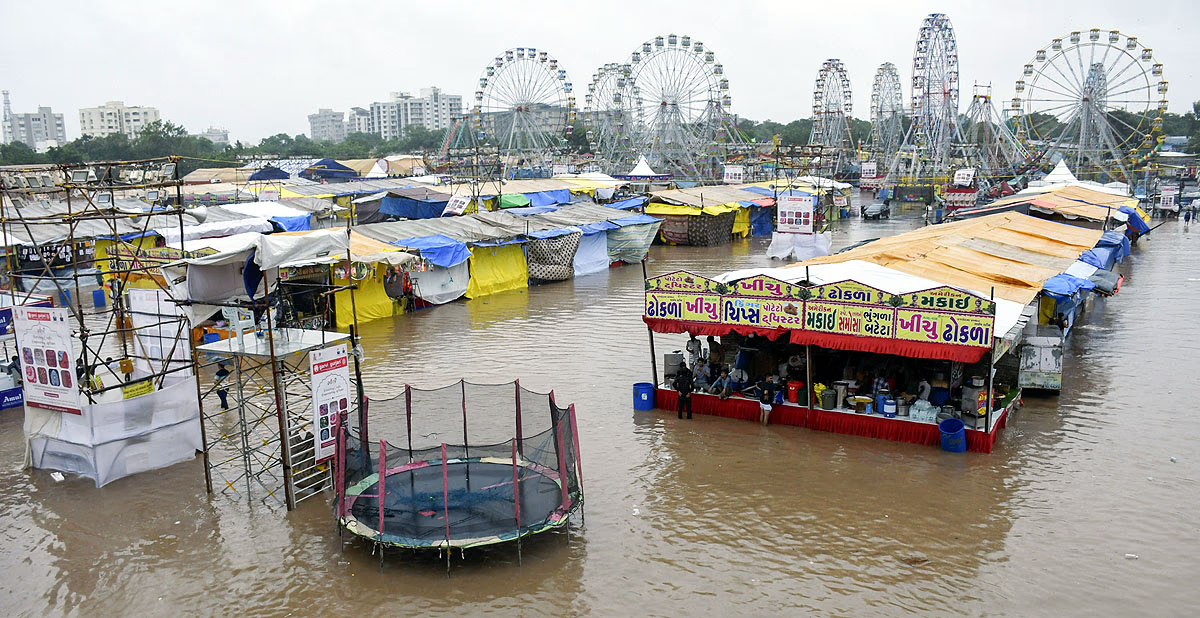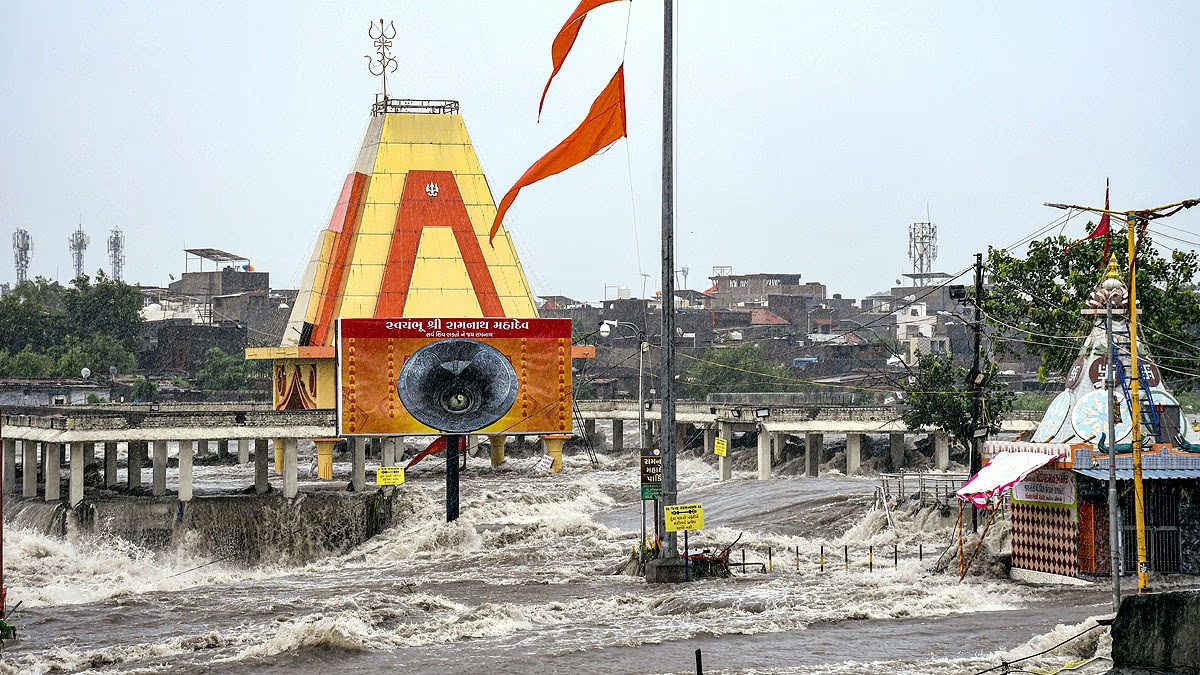Gujarat has been experiencing relentless and extreme rainfall, a phenomenon never seen before. The drastic change in rainfall patterns is attributed to climate change and rising temperatures, which have shifted the monsoon's flooding from UP and Bihar to the dry states.
Even the desert regions of Rajasthan are getting submerged, along with coastal areas of Gujarat. Such rainfall is beyond weather scientists' predictions. They acknowledge a significant shift in rain patterns. The primary cause of the heavy rains in Madhya Pradesh, Rajasthan, and Gujarat is the movement of multiple low-pressure areas from the Bay of Bengal towards the west.
Read More:

Source: aajtak
Earlier the Route Included Bihar-UP-Haryana...Now It's Different
Typically, low-pressure areas formed in the Bay of Bengal would move northwest towards Bihar, UP, Haryana, and Punjab, causing heavy rainfall along the way. This year, however, these low-pressure zones have altered their path, traveling through Madhya Pradesh, Maharashtra, Gujarat, and Rajasthan towards the west.
Meteorologists attribute this to climate change. According to Mahesh Palawat, Vice President of Skymet, a private weather forecasting agency, climate change is the primary cause. This has altered the rain patterns above these states. This year, four low-pressure areas and two depressions formed over the Bay of Bengal, all of which followed the western route.
Read More: Land Submersion in Mumbai: Threatened by Rising Sea Levels Over the Next 16 Years

Source: aajtak
For The Past 4-5 Years, Rainfall Patterns Have Been Shifting Westward
This is not the first year that rainfall patterns have shifted westward. For the past 4-5 years, efforts have been directed towards following this route. The rising temperatures are changing rain patterns, leading to excess rainfall in dry regions like Odisha, Chhattisgarh, Madhya Pradesh, and Gujarat.
Soma Sen Roy, a scientist at the Indian Meteorological Center, affirms that multiple low-pressure areas have been forming towards the west in the Bay of Bengal. Their numbers are increasing, causing erratic rainfall. August sees more low-pressure systems, leading to above-average rainfall in several states. This is a normal process. The westward swing of monsoon rains is a typical occurrence, frequently observed.




